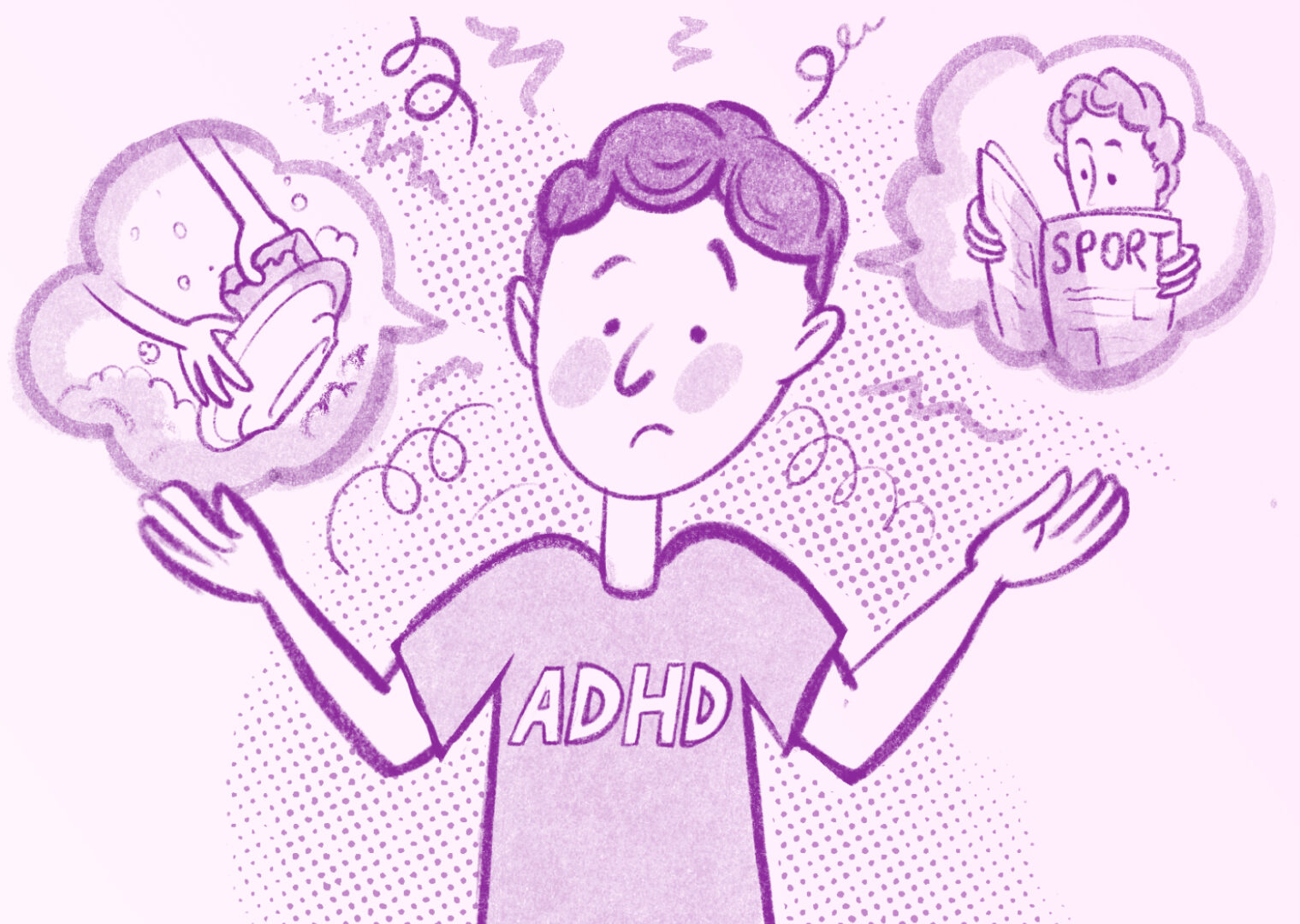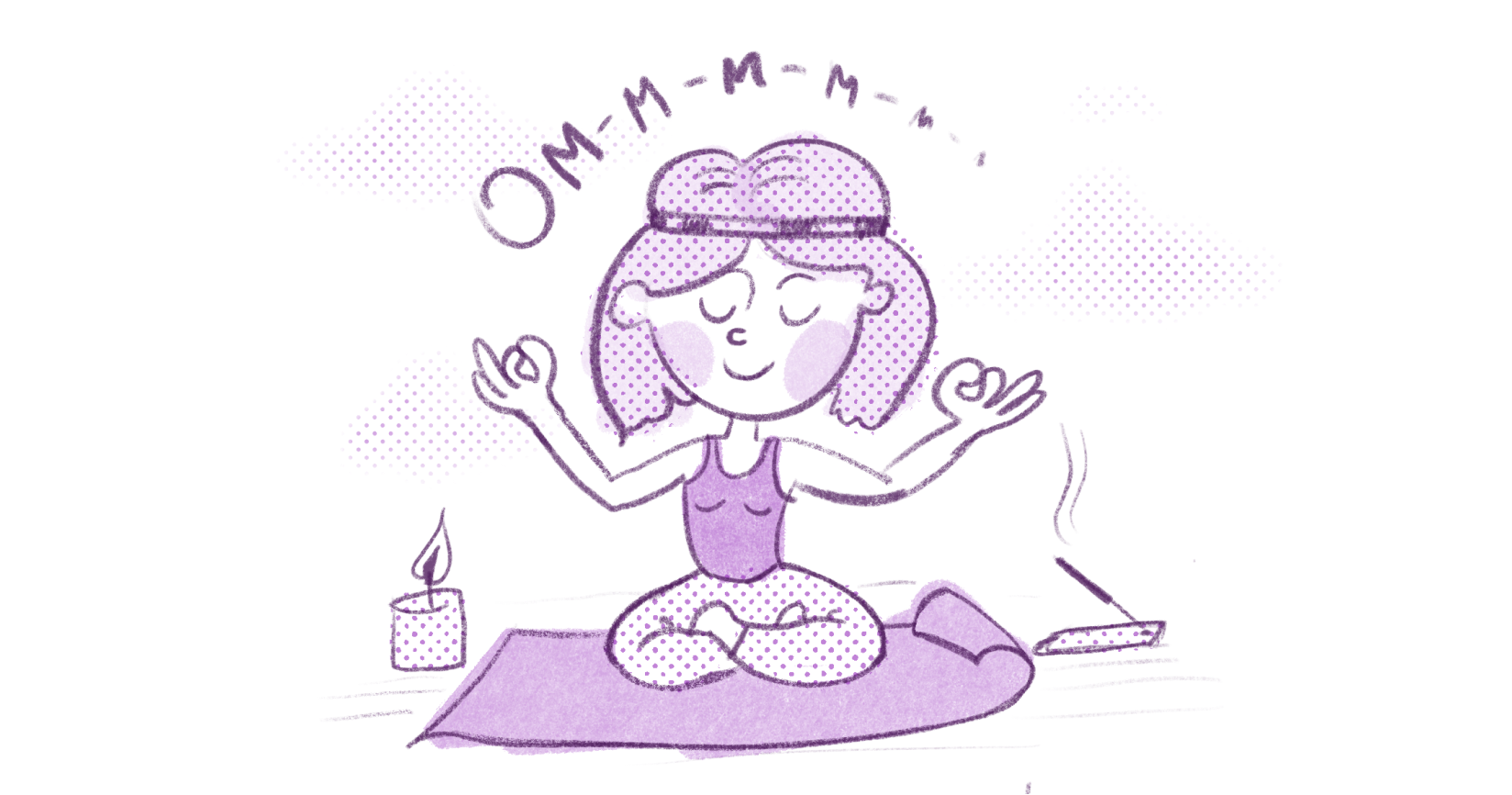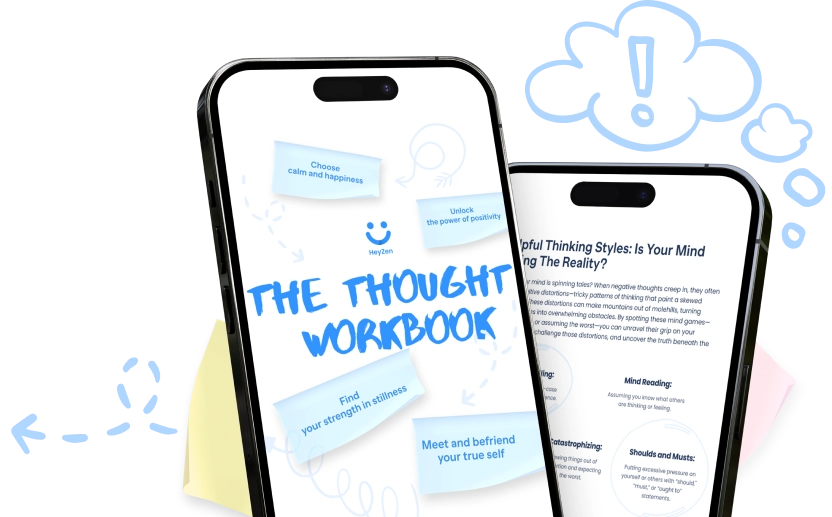Attention Deficit Hyperactivity Disorder: Understanding What ADHD Is and What It Is Not

Is ADHD the same as hyperactivity? Or is irresistible doom-scrolling one of the prime ADHD symptoms? 400-500 million adults in the world struggle with ADHD, and the number is expected to rise as more and more people start to learn about the disorder. Seems like ADHD has become a normal part of our lives, yet we still don’t know much about it. Finally, all the useful data is here, in one article, that will help you get a wholesome understanding of the disorder and how to cope with it.
🌐 This guide is available in other languages: PL TR ID IT ES PT DE FR
Key Takeaways
- ADHD, or attention deficit hyperactivity disorder, is a neurological condition that affects focus and attention, not intelligence or cognitive abilities. It’s characterized by difficulties in task engagement and impulsivity due to an imbalance in brain networks.
- Genetics account for approximately 70-80% of the risk for ADHD, as indicated by twin studies. However, various environmental factors also play a significant role in its development (prenatal exposure to alcohol or nicotine, early childhood lead exposure, etc.).
- ADHD is not a modern disorder linked directly to technology and the fast-paced life of today, but a long-recognized condition that can be managed with the right treatment and lifestyle changes.
- There are three subtypes of ADHD: predominantly inattentive, hyperactive-impulsive, and combined. The symptoms vary among individuals.
- Diagnosing attention deficit and hyperactivity disorder requires a professional evaluation, which includes medical tests and interviews. Because symptoms are complex and may be present in other comorbid conditions, one should avoid self-diagnosis.
- ADHD is commonly treated with stimulant medications, but non-medical approaches like cognitive-behavioral therapy (CBT), mindfulness, and dietary adjustments may also be effective in managing some symptoms.
- While the disorder presents challenges, it also comes with unique strengths like creativity and quick decision-making. Understanding and managing the condition can help turn these traits into valuable assets.
About attention deficit hyperactivity disorder (ADHD)
So, what is ADHD? As you already understand, the abbreviation stands for attention deficit hyperactivity disorder, and it primarily indicates how one’s brain is functioning. It has nothing to do with IQ or intelligence, but it only affects the ability to focus and attend. To be diagnosed, the symptoms should start before the age of 12 and significantly impair functioning in at least two settings, e.g., at school and at home.
ADHD is still under research, and there is no unifying theory about how ADHD affects the brain, but recent studies suggest the mechanism of the disorder includes impairments at multiple levels of the structure and function of the brain, such as:
- dopamine function,
- size and function of brain structures like the prefrontal cortex and basal ganglia,
- executive functions like attention control and working memory.
What causes ADHD?
ADHD is a congenital disorder, meaning that it can’t be developed, but people are born with it. So, here ADHD is a disorder that can be developed under certain factors, the majority of them affecting the person while still in the womb. So, here are NOT ADHD CAUSES:
- Poor parenting.
- Laziness.
- Low cognitive and mental abilities.
- Excessive consumption of social media.
The exact cause of ADHD is still unknown. Some studies suggest that the disorder is hereditary. The problem is that different genetic mechanisms and many variables are involved in the process. So, while a family history is one of the risk factors, it’s not possible to diagnose the disease with genetic testing.
Also, while ADHD was commonly diagnosed in children, more and more adults appear to suffer from the same symptoms. There’s an assumption that excessive use of social media and the hectic pace of life are responsible for such an upsurge. But people were diagnosed with the disorder long before the advent of social media and modern social and environmental factors. While social media undeniably exacerbate symptoms, many things can cause symptoms similar to ADHD, and this is why the diagnosis is based on specific criteria.
The reason why mental disorders started to become so widespread is that we grow more aware and attentive to our mental well-being; we’ve finally started to question if our learning disabilities or concentration issues are actually within the normal range.
Common ADHD symptoms
As the disorder often comes with other mental health conditions, the signs of ADHD are blurred. However, the most common are the following:
- Hyperactivity, or constant movements of body parts, fidgeting, and excessive talking.
- Low self-esteem due to an inability to meet educational and societal goals.
- Trouble paying attention and maintaining focus for a long time.
Undiagnosed ADHDers are at increased risk of developing mood and anxiety disorders due to hyperactivity of the brain and a tendency to overthink and catastrophize, while their likelihood of depression is two times higher. Moreover, adults and adolescents are prone to substance abuse at twice the rate of non-ADHD people.
Usually, doctors indicate the severity (mild, moderate, or severe) of ADHD and detect the subtype of the disorder by checking a patient according to criteria outlined in the Diagnostic and Statistical Manual of Mental Disorders (DSM-V) created by the American Psychiatric Association. In a nutshell, there are 3 subtypes with the following symptoms:
Predominantly inattentive
Speaking of types of ADHD in women, this one is observed more often. It is characterized by making careless mistakes, difficulty keeping attention and organizing tasks, reluctance to perform activities that require sustained mental effort, etc.
Predominantly hyperactive-impulsive
This is statistically a more common type of ADHD in men, but a considerable percentage of women suffer from it too. It is characterized by interrupting others, squirming, fidgeting, difficulty staying quiet during leisure activities, behaving as if always “driven by a motor,” difficulty waiting for one’s turn, etc.
The combined subtype
Includes symptoms from both subtypes. The combined subtype is more prone to co-existence with other disorders and is sometimes manifested more severely.
How to diagnose ADHD?
ADHD can and should be diagnosed only via professional medical evaluation, for there are many affective factors and disorders that can either go along with it or resemble it. This is why it’s important to reject the idea of self-diagnosis, especially when it comes to ADHD in children, and schedule a visit with a psychiatrist, neurologist, or physician.
The process of ADHD diagnosis may involve:
- Blood tests.
- Electroencephalogram (EEG).
- Questionnaire.
- Interviews with a doctor.
Overall, the process of diagnosis can be extensive and time-consuming, but be sure that once you understand your disorder, it will be easier and faster to break free from its chains. A professional evaluation of your state will take you a step closer to its correct treatment, which, in turn, will give your life a turn for the better.
How is ADHD treated?
Mostly, people diagnosed with ADHD are prescribed one of the stimulants, for example, methylphenidate, lisdexamfetamine, etc. You may know them under various marketing names, such as Adderall, Ritalin, etc. All of them target different neurotransmitters (dopamine, noradrenaline, etc.) and are thought to stabilize different brain areas that are responsible for abnormalities. Each case is different, and an ADHD specialist prescribes the needed medication only after your careful screening.
Together with it, ADHD treatment for adults often includes antidepressants and psychological counseling, especially in cases where ADHD wasn’t diagnosed in childhood.
Is it possible to treat ADHD without medications?
When ADHD adults are treated with artificial medications alone, at some point in their lives, they find themselves struggling in basic settings and in human interactions because they didn’t undergo any lifestyle skills training and weren’t taught the coping strategies for managing symptoms.
While medications indeed work to normalize the work of the brain, studies also support the positive effects of psychotherapy, meditation, and an overall healthy lifestyle as supplementary treatment options to soothe some ADHD symptoms and its comorbid conditions.
Here’s how a diet helps:

Omega 3-6
Have you heard about Omega-3 and Omega-6 fatty acids? Turns out that it has potential to help reduce depression, anxiety, and other bothersome symptoms. 13 out of 16 studies show that ADHDers who supplemented their diet with Omega-3-6 actually felt improvement in their short- and long-term memory, impulsivity, and attention. Another study indicated that the therapeutic effect of Omega-3 alone is achieved only in long-term treatment, i.e., lasting for 4 months or longer.
Overall, while it may help with some symptoms of ADHD, it is currently not officially recommended as a treatment option.
Sugar
What’s interesting is that even though some claim that sugar exacerbates and even causes ADHD, there are no studies showing their direct connection. However, according to the research, consumption of sugar-sweetened soft drinks increased the symptoms of ADHD, but it’s difficult to say whether the sugar in the drinks alone was responsible for the negative effect.
And while it was found in 2019 that a healthy diet with a low intake of refined sugar and saturated fats may play a protective role against ADHD and hyperactivity, the results are insufficient to know for sure if they’re actually connected. All in all, a healthy, balanced diet without (or just a little bit) soft drinks is a good choice for everyone, not just those with attention deficit hyperactivity disorder.
How cognitive-behavioral therapy (CBT) helps:
As we’ve mentioned above, a lot of adults don’t have a stable set of patterns for how to behave in professional environments or within interpersonal relationships.
On the one hand, they’re developing poor self-esteem and depression, feeling rejected from a very young age because of the peculiarities of their behavior, difficulties when studying, and pressure from family members.
On the other hand, impulsivity and inattentiveness prevent them from climbing career ladders and simply forming healthy relationships. The children, whose parents refuse to notice the symptoms and visit a child psychiatrist, grow up with fewer skills that would help them succeed in this life.
This is when CBT comes in to help. Essentially, this branch of psychology focuses on teaching individuals a set of practical tools to regulate emotional responses and establish healthy behaviors. The research conducted in 2023 clearly shows how CBT improved, with and without ADHD medications, self-esteem, and the overall quality of life of ADHD adults.
Here’s how meditation helps:

The positive effect of meditation on ADHDers has only started to be explored and has great potential in alleviating ADHD symptoms. Some studies reveal that subjects with ADHD noticed alleviation of anxiety, depression, and hyperactivity as their daily routine included mindful walking, breathing, and eating, as well as meditation. While the research is still young, meditation does show promising potential in helping manage ADHD.
There are two major types of mindful meditation:
Focused meditation
It’s the practice that requires one to concentrate on a particular thought, object, or breathing. When one’s thoughts start to wander, they need to apply some mental effort to maintain attention on the object or feeling of focus. This type of meditation allows us to learn to concentrate and disregard unnecessary thoughts or objects.
Open-monitoring meditation
This involves observing, without any judgment, the whole spectrum of one’s feelings, emotions, and even the external environment. This way, we can train not to impulsively react to our thoughts or objects around but to mindfully assess a situation.
Regular practice of meditation can offset not only the ADHD-related loss of focus but also the age-related one. Dilating your gaze to observe your whole surroundings, in turn, trains your brain to perceive more at once.
People with ADHD tend to hyperfocus on one thing of particular interest to them, leading to burnout, productivity loss, and, well, simply the inability to perform other, more boring tasks. That’s why it’s necessary to learn and practice how to see the bigger picture to avoid impulsivity and obsessions.
ADHD is a superpower to take with responsibility
People are changing their views on ADHD. It’s no longer a disease to be ashamed of but simply one, among many, varieties of brain. Yes, you can be easily distracted, but how effortlessly you tackle urgent tasks and how great your creative thinking is! Your ability to make decisions on the go is amazing, and, well, we bet many envy your agility.
But every power comes with great responsibility, right? Sometimes it goes out of control if we haven’t invested time or effort in taming it. So, instead of suffering from the unpleasant side effects that go with ADHD superpowers, why not turn them into another set of strengths? The first step towards it is understanding your diagnosis.
Whether you have ADHD or not, our attention span is shrinking, thanks to reels, TikToks, and the overall tendency to consume information in short chunks. So, if you feel that you’re developing one of the disturbing ADHD symptoms, start exploring the immense world of non-invasive methods for enhancing focus and attention with meditation, sports, and behavior therapy. Remember that you can find your support and help both online and within your friends and family. Check out our list of ADHD quotes for inspiration.
FAQ
What are the primary symptoms of ADHD?
There are three subtypes of attention deficit disorder with three severity levels (mild, moderate, and severe). Each subtype is characterized by its own set of symptoms:
Inattentive subtype:
- Forgetful.
- Easily distracted.
- Difficulty in organizing tasks.
- Doesn’t pay attention even when spoken directly.
- Often makes careless mistakes and struggles with daily chores.
- and others.
Hyperactive-impulsive subtype:
- Interrupts others, blurts out answers, and talks excessively.
- Restlessness and difficulty sitting or staying still when it’s expected.
- Fidgeting with hands, feet, or objects around.
- Acts as if always “on the go.”
- and others.
Combined subtype:
- A combination of the symptoms above.
If you only have one or two of the symptoms above, it doesn’t mean that you have ADHD. Sometimes it resembles other mental disorders, so it’s better to visit a doctor if those symptoms affect your daily functioning.
Can ADHD be developed in adults?
While on rare occasions adults do develop ADHD due to external factors, it is generally considered to be a congenital disorder, meaning that people are mostly born with it. The first symptoms are revealed in boys and girls in early childhood, before 12 years of age, and should be diagnosed and treated accordingly.
Sometimes, a child’s caregivers fail to spot the symptoms, so they grow up not knowing they have ADHD. However, as adults, they can seek medical help themselves to be diagnosed and receive the necessary treatment.
Can I treat ADHD without medications?
Only separate ADHD symptoms can be treated without chemical drugs. For example, mindful meditations allow you to train the brain to focus on the present moment and curb impulsive behavior. Physical activities can boost mood and energy to help with some of the comorbidities of ADHD. Cognitive-behavioral therapy can teach you skills for self-regulation, getting rid of obsessive-negative thoughts, and building strong and healthy relationships with other people.










